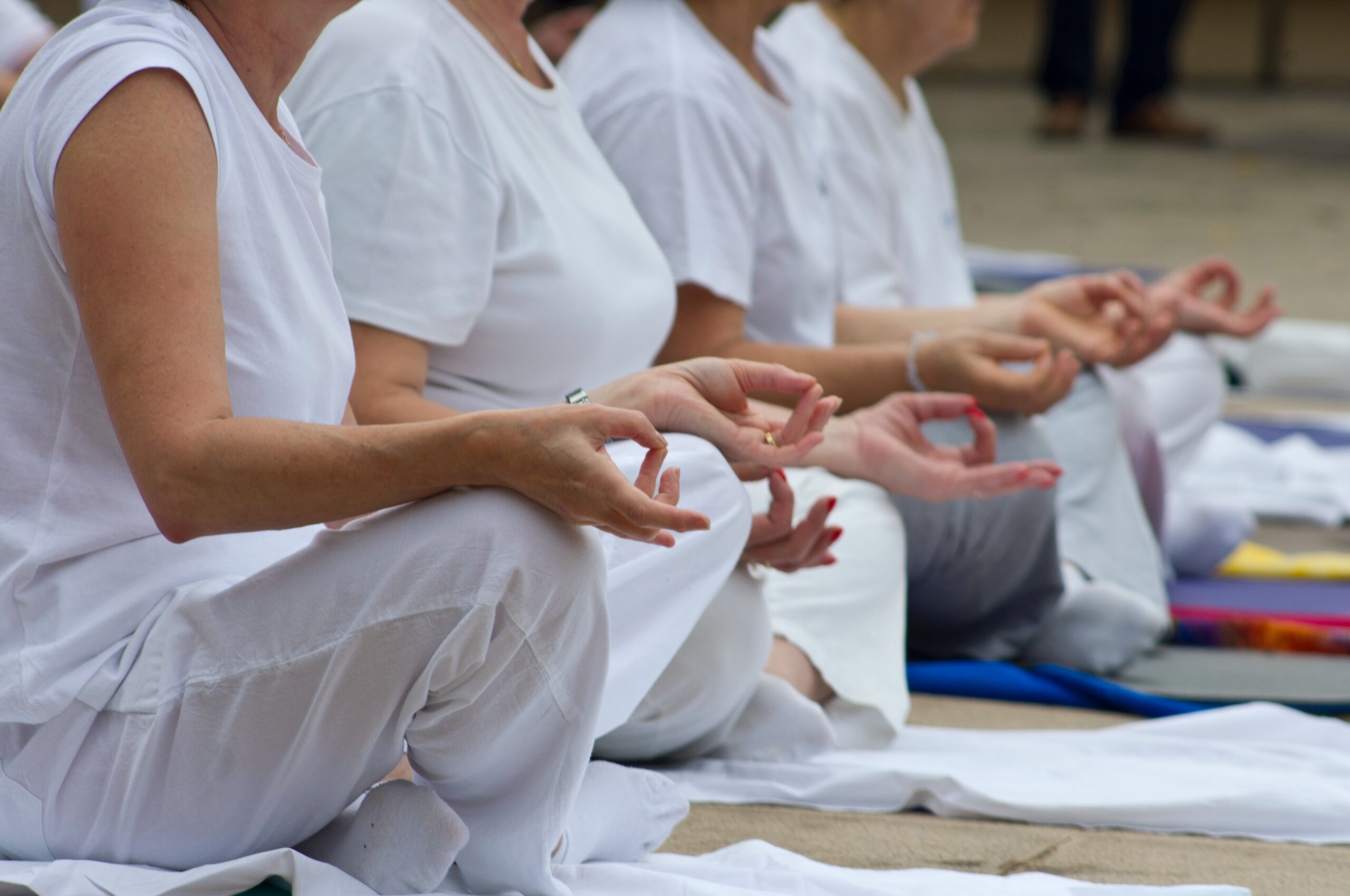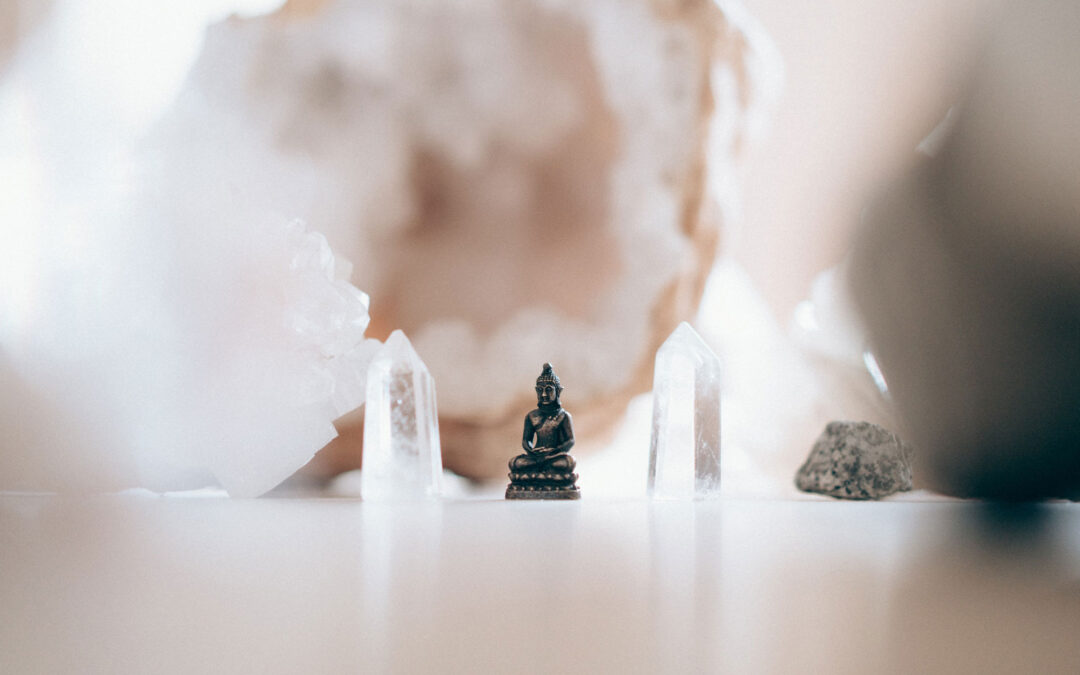Dispelling Misconceptions About Kundalini Yoga
By far and large, the most common rumor about kundalini yoga is that it is dangerous. Disappointedly, comments made by people such as the prominent yogi and head of the Isha Foundation, Sadhguru have likely discouraged people from exploring the practice – people who could greatly benefit from its effects. I am an individual who safely healed myself from depression using the teachings of Kundalini Yoga and I am passionate about educating others about prescription-free solutions to the widespread and debilitating affliction. As a trained instructor of the practice since 2013, I have introduced this lineage of yoga to thousands of people around the world and without a single adverse reaction from a practitioner. In this article I aim to quell the sensationalism surrounding Kundalini Yoga and guide other teachers in navigating conversations on the topic in an overall effort to increase awareness about ancient and proven solutions to all-too-common and unnecessary maladies and disorders from which people suffer.
What is Kundalini Yoga?
To begin, the word yoga comes from the Sanskrit root yuj, meaning ‘to unite.’ The practice, no matter the lineage, seeks to create union between a person’s body, mind and spirit, as well as with the individual self (the ego) and universal consciousness. When union of this kind occurs, practitioners explain there being a neutralization of egoic thoughts and behaviors and a greater sense of interconnectedness with all that is.
The word ‘kundalini’ is a Sanskrit term that translates as ‘circular’ or ‘coiled.’ In yoga, kundalini refers to the primal, feminine (or Shakti) force that rests sleeping, or coiled like a serpent, at the base of the spine. This energy can be moved upwards to the head by incorporating specific movements and breath patterns.
Kundalini Yoga is a specific lineage of yoga, a sacred and scientific technology that uses a dynamic combination of physical movement (asana), pranayama (breath), meditation (dhyana), hand positions (mudra), energetic locks (bhanda) and relaxation (savasana) to activate a person’s latent energy and gently maintain and optimize it. When the life force energy is awakened, a person experiences a multitude of physical, emotional, biochemical and energetic results. When practiced regularly, there is a compounded effect – one the most widely reported being increased and sustained joy.
Why Is Kundalini Yoga Said To Be Dangerous?
#1. It is a high-speed life overhaul
While all yoga shares the same end goal of uniting one with the Higher Self (or one’s Truth), Kundalini’s approach is quicker. The Yoga Sutras (written teachings) say that what one can achieve in 12 years of Hatha Yoga, plus 6 years of Raj Yoga, plus 3 years of Mantra Yoga, plus 1 year of Laya Yoga, one can achieve in a single year of perfectly practiced Kundalini Yoga. Essentially, it yields the greatest return of one’s investment of time – a precious commodity in the modern age.
Kundalini Yoga has a philosophical purpose to awaken one’s truest and most complete potential. To sincerely be all that you can be. That means anything standing in the way of that will get demolished such as: dependent or abusive marriages/relationships, addictions, habits and excuses. These things have no business when Greatness is at one’s doorstep. The letting go happens in stages, sometimes abruptly, sometimes subtly but it undeniably happens. Therefore the practitioner of the yoga must act with grace and empathy as it relates to other parties involved to the changes.
#2. With Power Comes An Obligation
In his video discussing Kundalini Yoga, Sadhguru likens Kundalini Yoga to nuclear energy saying it is ‘dangerous’ because it’s potent and, “the most potent is always the most dangerous if improperly handled.”
Any misuse of power can be risky and in the digital world where short clips of content are consumed by quick swiping and scrolling, it’s true that any random person on social media might come across a short 3 or 9 minute practice of Kundalini Yoga, try it out and quite immediately experience the strength of the practice without necessarily understanding the responsibility that comes with that generated energy. The initial proper handling then lies in the hands of the person instructing – always delivering the teaching in such a way that incorporates the necessary reverence at the start of practice with the invocation of the Adi Mantra as a means to energetically transmit the intention of awakening one’s Highest Self, and not that of the ego that might otherwise be driven to manipulate.
#3. Intuition is threatening
Apart from the five basic senses of vision, hearing, touch, smell and taste there is a sixth sense of proprioception. As children we possess the ability to connect with the unseen world by perceiving auras, having ‘imaginary’ friends, hearing voices, or by knowing we have been in a particular place before. Over time we are told by adults that the unseen world is not real and little by little, we release our trust and connection to it – but never entirely. We can salvage these gifts and hone our capacities again. For each of the five senses, there is an associated Clairsense. Oprah Winfrey hosted the renowned psychic medium, Rebecca Rosen on her show where she explained each clairsense. Just as Rosen teaches methods on how to recover these abilities, anyone practicing Kundalini Yoga will re-learn their innate capacities.
Using specific breath techniques and meditation, Kundalini Yoga is a formula through which one’s sensitivity is increased. In fact, it is discussed in the lineage that the human sensory system will be our greatest asset in the Aquarian Age (the zodiac age that we entered around 2012). One can cultivate their sensory system by consciously connecting to one’s breath, strengthening the nervous system, activating the glandular system, balancing the emotional energies and channeling mental energy into intuitive awareness. Once these powers are recuperated, sovereignty is claimed and this makes a person incapable of being controlled, misled or deceived, and that is threatening to some groups or individuals.
#4. It’s preventitive healthcare
Another misunderstanding about Kundalini Yoga is that a person could either overwork their nervous system or experience something called a ‘Kundalini Awakening’ which is a sudden release of a person’s reserve life force energy, the unbinding of which in an abrupt way is the equivalent of shaking up a bottle of champagne and popping the cork. But as previously mentioned, the approach in Kundalini Yoga is to optimize the sensory system, not overtax it too quickly. So long as a person is approaching the Kundalini Yoga practice with respect and is being guided by a certified instructor who is accredited, there is unlikely risk of the aforementioned occuring (though anyone suffering from a known and serious mental or health condition should always consult their doctor before attending a class).
In fact, with chronic stress linked to six of the leading causes of death including heart disease, cancer, lung ailments, accidents, cirrhosis of the liver and suicide (according to the American Psychological Association), what more people need is access to applications that re-educate the nervous system’s capacity to naturally recover after being exposed to daily pressures. Kundalini Yoga has hundreds of techniques that re-establish resilience in the nervous system and balance the glandular secretions in the body which ultimately supports relaxation, connection, digestion, sexual functions, sleep cycles, and overall well-being. Kundalini Yoga’s processes are a recipe for continued adaptation of our ever-changing environments so that people have increased body awareness, accountability related to one daily habits, and self control with thoughts and responses with oneself and toward other people.
#5. Available now: all-access pass to the sacred teachings
For thousands of years, the transmission of the teachings of Kundalini Yoga were passed down verbally from a master who decided when/if a student was a ready disciple. However, this was back during the zodiac Age of Pisces when intellect was everything if you wanted to become ‘somebody.’ We’re in a stage of our human evolution now though where intellect will only get one so far. What is required of us now is embodiment of the teachings, which will only come from seeking an internal wisdom, self control, intuition and the active use of one’s neutral, meditative mind.
In preparation for this time, one teacher saw the need to prepare two generations of people for this current age. And in a defiant act against tradition, he began openly teaching Kundalini Yoga to groups in North America in the 1960’s and even allowing the teachings to be transcribed and recorded. Today there are over 9,000 Kundalini Yoga kriyas (postural asana sequences) and an equal number of kundalini meditations available in published and written form, all of which are available to anyone for free in The Library of Teachings. This “style” of Kundalini Yoga is trademarked as “Kundalini Yoga as Taught by Yogi Bhajan,” and it is currently the most widespread version of the lineage being taught. Ultimately, his forthright belief created a platform for teaching people how to share the practice in a safe and systematic way, all together minimizing the “risks” by developing a way to incrementally and effectively awaken the kundalini energy in a person. In a guided Kundalini Yoga class as Taught by Yogi Bhajan, there are no levels and no prior experience of the practice is necessary.
To Get Started With Kundalini Yoga
Keep an open mind, particularly if you have any hatha or vinyasa yoga background or former experience. Kundalini Yoga’s applications are quite different and do not always make immediate logical sense but that’s also part of the fun – get out of your head and let yourself drop into the instruction and assess how you feel after the class.
If it’s your first Kundalini Yoga class, be sure to tell the teacher (whether it’s in-person or online) so the instructor can be sure to explain some of the more foundational aspects of the practice throughout the class, for your benefit.
Give it 3-5 classes before you decide on if you’d like to pursue practicing it further. The breadth of the teachings are so extremely vast and often the teacher is choosing what type of class to share based on the time of day, cycle of the moon or other such events. One class could be extremely physically energetic while another might seem more like a 90 minute blissed out meditation.
To start your kundalini yoga journey from the comfort of your own home, check out 12 on-demand classes, led by me, at this link.





